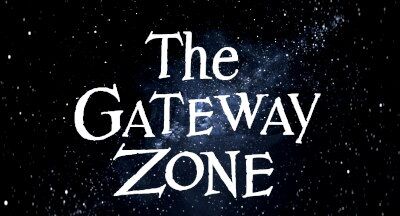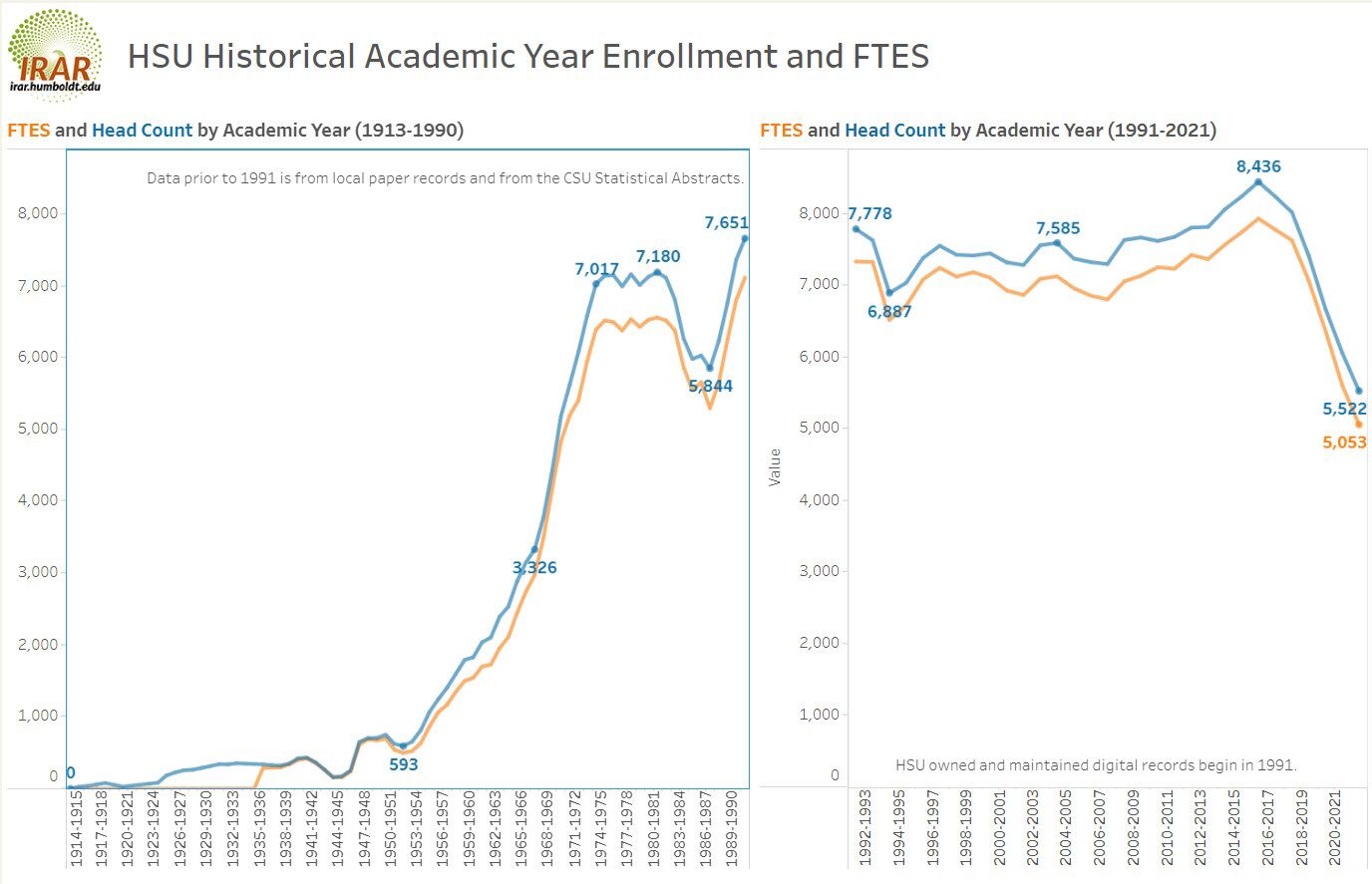The Twilight Zone? The Gateway Zone?
“You’re traveling through another dimension, a dimension not only of sight and sound but of mind. A journey into a wondrous land of imagination. You’ve just crossed over into… The Twilight Zone.”
— Rod Serling, from Season 1 of The Twilight Zone. 1959.
Remember the theme music and introduction to The Twilight Zone? Here are two of those intros.
[player id=11899]
[player id=11901]
 “The Twilight Zone” came on national television from 1959 to 1965, sixty years ago. Reruns continue to play to this day on the cable channels. We all know what happens in the Twilight Zone, right?
“The Twilight Zone” came on national television from 1959 to 1965, sixty years ago. Reruns continue to play to this day on the cable channels. We all know what happens in the Twilight Zone, right?
Back in 1960, when “The Twilight Zone” was aired, Arcata’s population was 5,200. What was then called Humboldt State had a student enrollment of just 2,000.
By 2023, the population of Arcata had increased to be about 19,200. Cal Poly Humboldt’s student population is shown as 5,976, with a full-time equivalent figure of 5,205.
Gateway: Suddenly, we find ourselves traveling through another dimension.
The Twilight Zone predictions of Cal Poly Humboldt.
Seven years from now, according to their projections, Cal Poly’s enrollment has more than doubled, to over 12,000. And perhaps 30 or 40 years from now, there are 3,500 apartments built in Arcata’s Gateway area — if sea level rise doesn’t claim our wastewater treatment plant first. That would be about 7,700 residents of that area, in addition to the 500 or so who already have homes there.
The Twilight Zone predictions of Gateway density.
A Gateway population of around 8,200 people in an area of 138 acres. That’s a population density of 37,900 people per square mile in that 0.216 square miles.
If that were to be true, we’d be seeing a density more than three times greater than Santa Monica, Washington DC, or Berkeley. Twice the density of San Francisco. Greater than the density of the five boroughs of New York City. Close to the density of Brooklyn, New York.
Even if just 500 apartments were to be built in the Gateway area over the next 20 years — the equivalent of ten or eleven block-long Sorrel Place buildings — the density would be along the lines of Santa Clara or Isla Vista CA. On a per-square-mile basis, the density of the Gateway area would be more than 150% that of Santa Rosa or Portland.
It’s a journey into a wondrous land of imagination.
What else about the Gateway Area Plan is rooted in fantasy?
The Twilight Zone predictions of affordability.
- That the new apartments will be affordable.
- That there will be home ownership opportunities.
- That building 500, or 1,000, or 2,000 apartments is going to “disrupt the market factor” and satiate the demand for housing in Arcata.
- That more apartments will cause rents to decrease, as the supply increases and (so is said) the demand drops. And as more apartments are built, the vacancy rate will improve, and it will be easier for people to find a place to rent.
- That we won’t need more school classrooms and teachers, playgrounds, parks, police, fire protection, road repairs, medical services, more homeless services — even more public restrooms! — etc etc. And that the increase in property taxes will pay for everything the City needs. [Hint: Cities get 2.5 cents of each property tax dollar that’s collected. The large majority — 62.5% — goes to pay for schools.]
“It is the middle ground between light and shadow, between science and superstition, and it lies between the pit of man’s fears and the summit of his knowledge. This is the dimension of imagination.”
The Gateway Plan: Science or Superstition?
Wanting an idealized world is not the same as creating it. Wishing that something were true is not the same as looking at the facts. And believing that the developers who build housing in the Gateway area will lower the rents as they build taller and taller structures is simply a superstition, a fantasy.
The following statements are taken from the Gateway Area Plan document.
These passages have been in every draft from the December 2021 first draft to the current December 2023 fourth draft. The illusions have not changed or been updated, despite two years of discussion and analysis.
- There will be thousands of housing units that are affordable to people in all income ranges.
- A broad range of housing densities and types, including rental and owner‐occupied options.
- Plan for up to 3,500 new residential units with[in] the Gateway Area that are available to a wide range of income levels and that include a balance of renters and owners.
- New buildings reflect the architectural values, livability, and aesthetic expectations of the community.
- New buildings will be equitable and environmentally sustainable.
- A new “community benefits program” in which projects that provide higher levels of community benefits are permitted greater building heights.
- Multiple strategies are baked into this Plan to make housing in the Gateway Area affordable to the full range of Arcatan household incomes.
- Housing options available for all income groups, ranging from 200 square foot deed‐restricted micro‐units to luxury condominiums for high‐income households.
- Encourage the creation of market‐rate units for singles and families as well as upper income units, such as luxury penthouses.
- Off‐street parking is de‐emphasized.
- Provides sufficient on-street parking to minimize off-street parking.
[Note: In reality, on-street parking will be around 65% of previous amounts.] - Upper floors are set back to ensure sunlight access to street below.
- There are several single-family homes scattered throughout the Plan Area.
[From the FAQ page. There are not “several” – there are around 60 stand-alone single-family homes in the plan area and perhaps 80 or 90 houses. There are about 77 lots with houses. In some cases there are more than one house on a lot.] - For many locals and visitors from the south and west, the Plan Area is the first impression of the City due to its easy access from Highway 101 via Samoa Boulevard. K Street, a main arterial through and into the City, also offers easy accessibility to many parts of the City.
[In other words, when drivers take the 101 offramps to enter Arcata — at Samoa Boulevard or any of them — the first place they go is to K Street? That’s their typical first impression of Arcata? That’s definitely a fantasy world.]
- The eastern boundary of the Plan Area is three blocks from the Arcata Plaza, with the form and character of buildings in this area reflecting their proximity to Arcata’s central core.
- Community feedback will be reflected in an updated version of the Gateway Area Plan. (This is from the City’s Gateway Area Plan FAQ page.)
- Sea level rise will . . . put remarkable pressures on critical infrastructure. These types of challenges need to be actively acknowledged and mitigated as the community plans for growth in the Gateway Area.
- The Gateway Area is not modeled to be impacted by rising sea levels until nine feet of sea level rise occurs, which is 80 years into the future at the “Extreme” modeling scenario. (This is from the City’s Gateway Area Plan FAQ page.)
[Note: Not expected to be impacted… except for rising groundwater levels — affecting the foundations, roads, and underground utilities — which is being ignored. We don’t need to have bay water in the streets for Sea Level Rise to affect the Gateway area. The 2005 New Year’s Eve king tide / storm was declared a “state of disaster” after bay waters came over Highway 101. See articles here and here and here.]
“You unlock this door with the key of imagination. You’re moving into a land of both shadow and substance, of things and ideas.”
You’ve just crossed over into . . . the Gateway Zone.

Humboldt State University / Cal Poly Humboldt
Enrollment figures

The history of HSU enrollment from 1935 to 2005 can be viewed as a PDF here.

